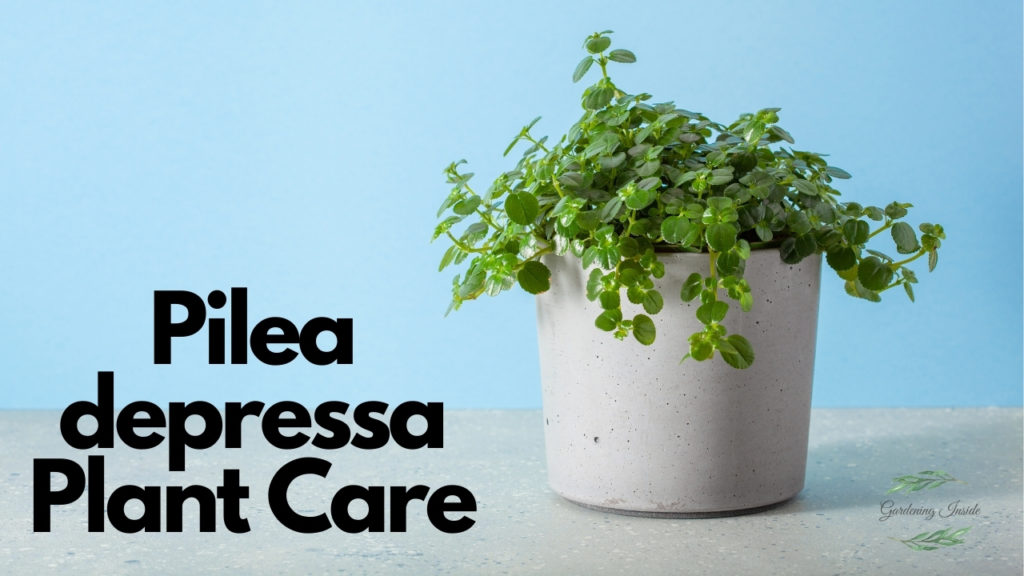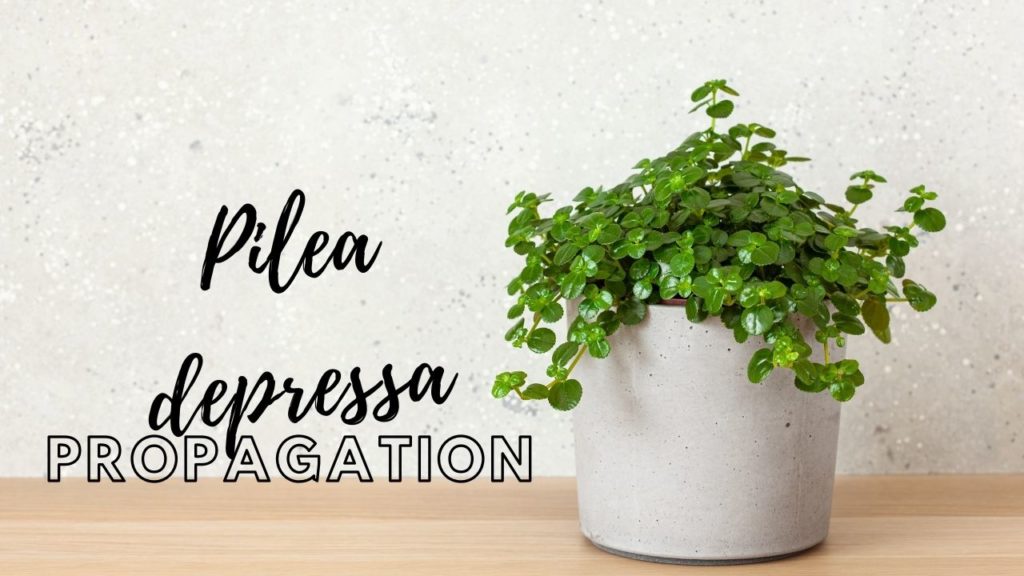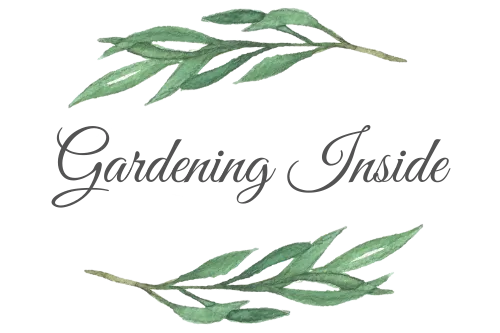Pilea depressa will be a more worthy addition to your garden bed. It is a small perennial plant that has beautifully attractive dark green and round leaves. You can easily manage to grow this plant, as it has a faster prolific rate.
The growers use it to cover the ground. It is a relatively strong plant, due to which gardeners grow it in the terrariums with frogs.
The growth of this plant is impressive, and you need to provide the plant with proper growing conditions. You can also use this plant as a hanging pot for ornamental purposes. If you are also deciding to grow this decorative climbing plant, then do not go anywhere.
Here’s the guide that will help you know the detailed features of this plant and care and growing considerations.

Pilea depressa Care | Baby Tears Plant Care
Fertilizer Requirements:
Fertilizers help the plant grows well at a greater prolific rate. It would be best if you fertilized your pilea depressa plant once a month, especially in the spring and summer.
However, you don’t need to fertilize your plant in winter. The best fertilizer that you can use to grow these plants is a liquid houseplant fertilizer.
Humidity requirements of the Plant:
Pilea depressa is usually native to the Caribbean, which is a humid area. So, it is a humidity-loving plant.
A typical range of humidity levels helps to grow the plant optimally. In winters, the humidity level usually drops down. So you need to maintain it by spraying it with a humidifier, or using the mist spray can also work.
Pitch Preferences:
The plant requires both indirect and bright sunlight within a day to help it grow well. It needs four hours of indirect light but cannot bear the direct sunlight.
Direct exposure to sunlight can result in the burning down of its leaves, and the leaves can also turn out to be yellow or brown. So, you need to consider the light requirements to help this plant grow fast.
If you are growing this plant in a place with insufficient natural light, there is no need to worry. You can use grow lights to help them grow well.
Potting mix:
The potting mix decides the plant’s growth rate, and the best mixture for potting mix uses peat moss and perlite with ration 2:1. So, if you let your plant grow in this potting mix, it will grow pretty well.
In case your plant is growing indoors, you can use perlite as a potting mix.
Check: Common Reason Behind Yellow Leaves on Orchids And How To Fix This
Pruning Pilea Depressa:
For baby tears plant care, you also need to control the size of your plant. You can control its growth by using sterilized or clean scissors and cut down to the desired length you need.
You need to prune your plant in the summers only and make sure that you do not cut the plant too much.
So, provide your beautiful plant with proper attention and care. Apart from this, you also need to remove the yellow, brown, or dead leaves from the plant.
Repotting:
Rootbound does not suit this plant, due to which you need to report it after a year or two.
Do you want to see if the roots are rootbound or not?
Don’t worry, as it is not a big deal, you can check it by taking out the plant from the pot. If the roots are intensely coiled with each other, then you need to report it.
Repotting Pilea depressa is highly essential, as negligence to this can result in stunted growth. Also, there are chances that roots of the plant come out of the pot via drainage holes.
If you decide to report your plant, you need to select a pot that is one size bigger than the previous one. Also, try to re-pot the plan in only spring or summer.
Water Preferences:
These tiny plants love to stay in moist areas and grow happily in this environment. But you must ensure that soil is not too wet, as it can result in root rot or damage to the plant.
You can check the soil to see if it needs water or not. If the soil gets dried to an inch from the top, it is the right time to water it. The water requirements also depend on the amount of light provided to the plant.
Stick your finger inside the potting mix to determine the right time to water the plant. Over-watering the plant can increase the chances of fungal attack and root rot as well.
Cutting of Pilea Depressa
Cutting this plant is not an easy thing to follow, and you need to consider several points in mind to cut it perfectly. These cuttings will be helpful to regrow the plant. Here are some cutting tips that you need to follow:
- Choose to cut your plant in the early spring season.
- The average length of the cuttings of the plant must be 10 centimeters.
- After that, remove the leaves from the bottom of the cuttings.
- Place the cuttings inside the water to help the roots grow.
- The plant roots will grow after seven days, but the roots take time to develop appropriately in the cold.
- After the root development, place the cuttings within the soil.

You May Also Like: Anthurium Warocqueanum Plant Care Guide | Growth Tips
Pilea depressa Propagation
You can quickly propagate Pilea depressa using different propagation techniques. The first method that you can use to propagate your plant is propagation via water. Putting the cuttings of the plant in a water jar will help the propagation.
After placing the cuttings in water, you must provide the cutting with bright and indirect light. It will help in fast growth, and as a result, you can add the plant to a permanent pot.
Propagation within the Potting Mix:
Pilea depressa can also be propagated within the potting mix. You need to follow the above instructions to cut down the plant’s cuttings. Make sure that your cutting has some leaves and nodes on it.
The node will help grow leaves and roots, resulting in the development of a new pilea depressa. Placing the cutting in the potting mix and introducing the right growing conditions will help here.
Pro tip:
Why is my Pilea Depressa dying?
Dying Pilea depressa occurs for several reasons, and you need to control both light and water. Here are the common issues that can result in the death of your plant:
- Make sure that your plant does not stay dry for too much or too little time. If you feel your plant is dry, check one inch of the topsoil before watering the plant. You can feel the moisture using your finer.
- Do not over-water your plant, as it can result in root rot and damage to the entire plant with stunted growth.
- Placing your plant in excessive light for too long can result in burning the leaves. Your plant can also die if set in indirect sunlight for a longer time.
- Although these plants are resistant to pest attacks, they can result in death or stunted growth if these pests attack your plant.
Also Check: Silver Lace Fern: Complete Guide of Care and Growth
Conclusion:
Pilea depressa is easy to grow plant with a fantastic prolific rate. You can extend this plant both indoors and outdoors. Indoors, the plant is used for ornamental purposes within the hanging pots.
These plants add up freshness to your environment and are appealing enough to attract the attention of visitors. The tiny, lush green leaves will give your garden bed a beautiful ground floor.
So, if you are also decided to grow this plant inside your garden, then make sure you know all the caring hacks.
Also, you can make your plant happily grow by following the above guide. Keep in mind the humidity level, temperature, and light requirements, and enjoy its fast and mesmerizing growth rate.
Frequently Asked Questions about Pilea depressa
How to care for baby tears plant?
Care of these baby tears plants is relatively easy, and you need to follow the following instructions:
a. Provide the plant with an average amount of water.
b. Keep your plant in bright and indirect light.
c. Fertilize your plant once every month.
d. Repot it after every one to two years for prolific growth rate.
How to grow pilea depressa?
You can grow the plant using different propagation methods. It can be propagated using water and the potting mix. All you need to do is to cut cuttings of the plant with some leaves and nodes. It is how baby tears plants can grow.
How do you treat pilea depressa?
You need to treat your plant smoothly, fulfilling all of its growing requirements. The plant loves high humidity levels and stays in indirect or bright light. Also, it needs repotting after one or two years. Hence, it would be best if you considered these things for treating your plant well.
Is pilea depressa toxic to cats and dogs?
The fantastic thing about this plant is that it is non-toxic and cannot hurt your cats or dogs. So, you can plant this indoors as well without any risk.
Why is my pilea depressa dying?
Dying Pilea depressa occurs for several reasons, and you need to control both light and water. Here are the common issues that can result in the death of your plant:
a. Make sure that your plant does not stay dry for too much or too little time. If you feel your plant is dry, check one inch of the topsoil before watering the plant. You can feel the moisture using your finer.
b. Do not over-water your plant, as it can result in root rot and damage to the entire plant with stunted growth.
c. Placing your plant in excessive light for too long can result in burning the leaves. Your plant can also die if set in indirect sunlight for a longer time.
d. Although these plants are resistant to pest attacks, they can result in death or stunted growth if these pests attack your plant.
